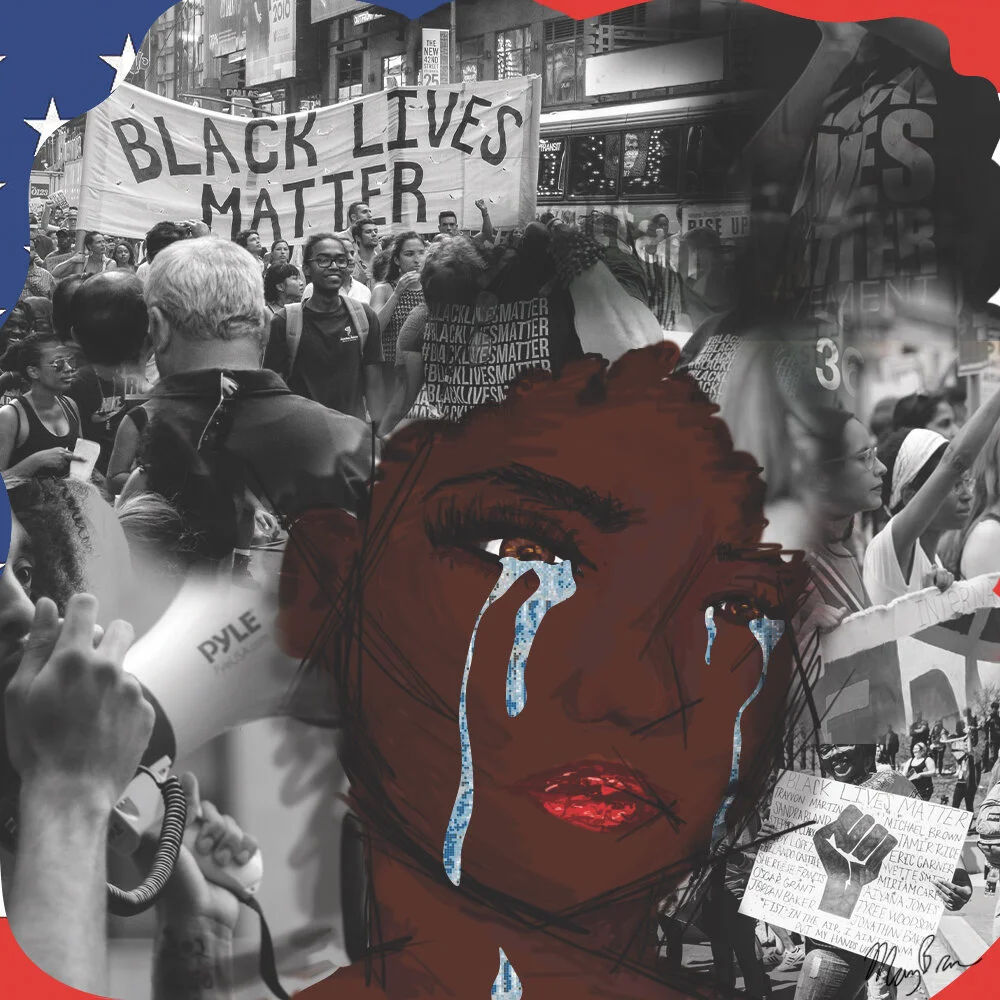Black in America
The piece that began this series, the BLM focused one is important to me because in such turbulent times that we are currently existing, there are centuries of hurt and pain being exposed and discussed. As for my design, I wanted the face to be symbolic of how even though people are in the streets, in the courthouse, working from home, and doing what they can to send their message and being strong in the face of the public eye, emotions are heightened in inconceivable ways. There is indescribable pain and struggle that can never be understood by the majority. Working despite these emotions comes the symbolism in the figure’s hair that always stands tall by those who wear it. Encoded in the natural hair and afro that is uniquely and beautifully African, is the movement that is Black Lives Matter. The strength of the protests rising above the hurt and the pain that we mask in order to fight every day. Yet still, behind that and symbolized by the American flag background, there are people who find ways to see no fault in this country and the oppressive systems that exist. They celebrate the flag ceremoniously, they celebrate the President without hesitation, they celebrate every system in place without a holistic understanding of not only the good, but also the bad. For every good deed (in the eyes of the beholder), there were a hundred people stepped over. And, in the case of America, there were over 10.7 million slaves and countless other lives stepped over in creating this country and millions more being stepped over every day in order to create an America that is “great”. That being said, it is not impossible or even common that one has distaste for their country because the opportunities and freedom that is advertised in America can be obtained, but there are hundreds of hurdles and extra steps to be taken by people of color and institutional barriers that need to be removed because we are far from great and far from free.
The additional two pieces connect the same themes of anguish in history as exemplified by collages of the enslavement periods in American history and the Civil Rights Era. For a more detailed discussion, check out my gallery talk!
Steven Mintz, “The Gilder Lehrman Institute of American History,” Historical Context: Facts about the Slave Trade and Slavery | Gilder Lehrman Institute of American History, accessed June 8, 2020, https://www.gilderlehrman.org/history-resources/teaching-resource/historical-context-facts-about-slave-trade-and-slavery)
Programs Used: Illustrator, Wacom, and Photoshop















